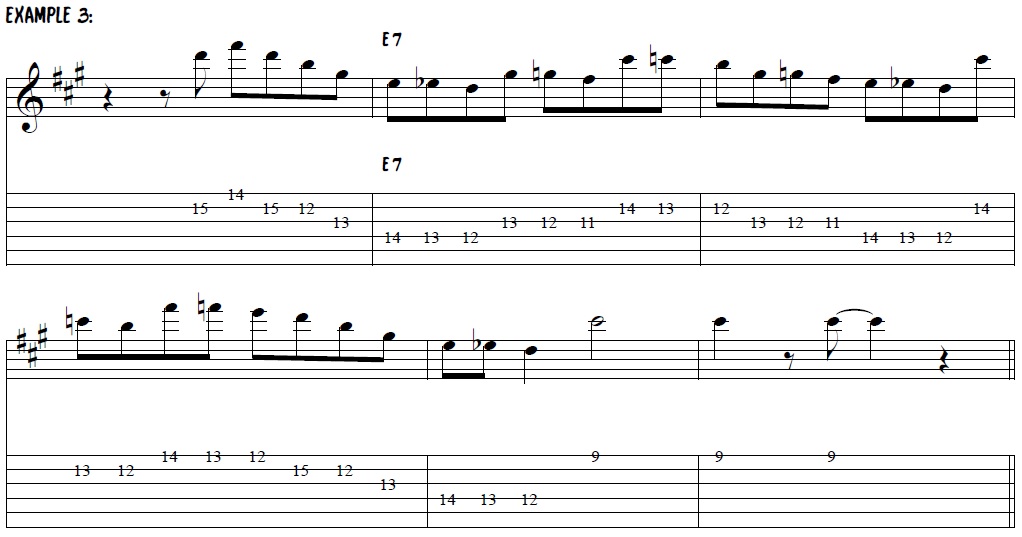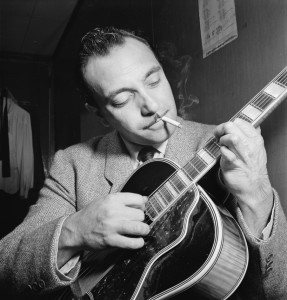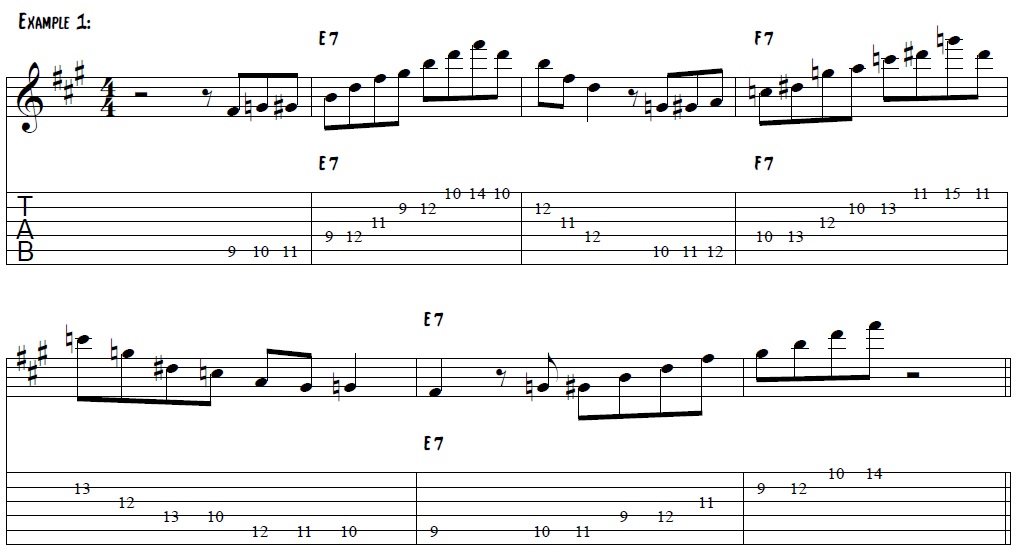One of the most effective ways I’ve learned about music over the years has been to listen to recordings of my favorite players and transcribe (write down the music note-for-note) their recordings. Growing up in an era before the Internet, guitar tablature sites, or Youtube, I was accustomed to sitting in a room for hours of dropping a record needle onto a track until I could learn a guitar part from the recording. It took a lot of patience, and some songs were much harder to do this with than others, but I learned a ton about music and guitar playing by doing this with various songs. It helped to grow up in a place like Tucson, Arizona where the summer days were too hot to be outside anyway, but perfect for sitting inside my room with my guitar and a turntable, trying to learn what I could from my favorite records. I was thrilled when CD players first came out and made this process a little easier. (I’m definitely showing my age here!)
I recently decided to revisit that same approach with the aid of a modern MP3 software tool (Best Practice) for slowing down audio playback without changing the pitch, to uncover some of the magic that I’d been hearing in my favorite recordings by the great Django Reinhardt.
Django’s music is a recent area of study for me after hearing his influence in so many other players that I’ve admired over the years. It’s easy to find his influence in all of the great Jazz guitar players that came after him in addition to Western Swing players, and Rockabilly players of the 40s and 50s. One of the best examples of Django’s influence is in the playing of guitar virtuosos Les Paul and Joe Pass. You can also find evidence of Django’s flashy style in the guitar solo of Bill Haley’s “Rock Around the Clock”, which is what first prompted me to explore Django’s music in more depth.
A few years ago I bought several of Django’s classic recordings from the 1930’s and 40’s and listened to them as often as I could so that I could absorb some of that magic. Learning any new style of music is much like learning a new language, especially as it pertains to improvisation which share so many of the same aspects as language. You have to immerse yourself in it for a while to begin to understand the vocabulary and feel of it.
From an emotional level, Django’s music is exciting, mischievous, joyful, and even humorous. His music has a feisty vibe to it that I can’t easily explain. In his recordings you can often hear the players egging each other on during the solos, as if they are thoroughly enjoying themselves, celebrating the joy of making good music (check out the track “Minor Swing” where you can hear someone shouting to Stephan Grapelli to go one more round at the end of his violin solo). Django’s music can also be sentimental, and melancholy (check out Nuages, meaning “clouds” in French, that he wrote during the Nazi occupation in France during WWII). After my immersion into Django’s music I’ve become a full-fledged fan and disciple of Gypsy Jazz guitar. I made it a personal goal to sit down and try to understand more of what Django was doing musically to create such interesting sounds, as well as gain an understanding of the playing technique he used to get his sound. I’m still on that quest. As I learned more about Django, the person, I came to appreciate him all the more:
- He only had the use of his thumb and two fretting fingers on his left hand, due to a burn injury he suffered from a caravan fire earlier in his life
- He was illiterate
- He continued to live in a gypsy caravan with his family, even after he had become a big music star in France
- He was a free-spirited, and often aloof and undependable. He didn’t even show up to his first recording session. The other musicians had to look for him in the billiard halls he frequented, until they found him and brought him to the session. When later asked why he didn’t show up, he explained that he didn’t think that his music would catch on so didn’t see any point in recording it. He changed his mind after hearing himself recorded for the first time. He certainly qualifies as a crazy composer, and I mean that in the most complimentary way!
One of the first Django songs I transcribed was the song “Django’s Tiger”. This song is chock-full of the elements that I like so much about his music. I live by the rule “when you hear music that catches your ear, try to understand why it works”. With that in mind I wrote this blog article to share some examples of the various musical treasure that I uncovered in my study of Django’s solo lines. Caution: Although Django had only 2 fretting fingers, his lines are not easy to play, even with all 4 fretting fingers, due to his super-human right-hand picking technique. He is what we would call nowadays, a “shredder”, and probably the very first one!
Use of arpeggios and upper/lower neighboring notes around the chord tones to create more playful and interesting lines
Check out this interesting line combining an E9 and F9 arpeggio with some chromatic passing tones to create a flashy sound over the E9 and F9 chords.
Check out the interesting way he resolves the line from Example 1 with this line in Example 2. He is outlining the A6/9 chord and nailing all of the important chord tones including the root, 3rd, 5th, maj7, 6th, and 9th, while connecting everything in a very musical way with the use of surrounding upper/lower neighbor tones. This is classic Django and a great example of his genius.

Use of chromaticism to add flash and excitement
Check out the way Django outlines this E9 chord in this example below, by using chromatic tones in between all of the usual notes in the E9 arpeggio. These passing tones create a more flowing sound and is a technique he used quite a lot. It adds a lot of flash and surprise to an otherwise simple arpeggio line.

Use of upper/lower neighboring notes and diminished sounds to create tension before resolving to the next chord
Check out this interesting line where he uses upper/lower neighbors to surround the first few notes of this A7 arpeggio then adds some notes from a diminished arpeggio (implying a more tense A7b9 sound) on his way to resolving the line to the notes in a D6/9 chord.

I hope that my examples here may offer you some insight into Django’s music and inspire you to come up with some of your own lines based on his approach, as it has done for me. I also hope that this will also inspire you to explore some of those composers that bend your ear in a good way, and prompt you to dig deeper into their music as way to gain insight about the music you like. There are so many great things to learn from studying music in this way, similar to analyzing the writing style of a great story-teller like Shakespeare.
If you’re interested in learning more about Django’s music, or Gypsy-Jazz guitar in general, I encourage you to have a look at some of these resources:
- Stochelo Rosenburg’s online academy for Gypsy Jazz guitar
- Truefire.com Gypsy Jazz duets
- Truefire.com Gypsy Jazz licks
Happy music making! -Jim


